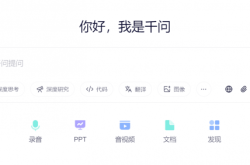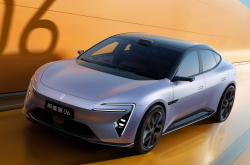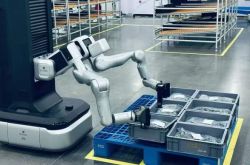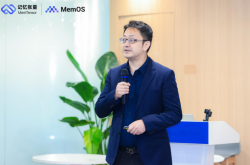"Specialized, New, High-tech, and Unique" "Little Giant" Enterprises' Urban Distribution: Who's Leading, Who's Rising?
![]() 04/01 2025
04/01 2025
![]() 853
853
The "Specialized, New, High-tech, and Unique" "Little Giant" enterprises form the backbone of China's manufacturing sector's high-quality development. They specialize in niche markets, command substantial market shares, possess core technologies, excel in quality and efficiency, and boast robust innovation capabilities and market competitiveness.
According to the Flare Intelligence Industry Data Center, China currently boasts a total of 14,600 "Specialized, New, High-tech, and Unique" "Little Giant" enterprises. Jiangsu Province leads the pack with 2,156 enterprises, followed by Guangdong (1,982) and Zhejiang (1,806). Together, Jiangsu, Guangdong, Zhejiang, Shandong, Beijing, and Shanghai account for over 60% of the national total.
Note: The "Specialized, New, High-tech, and Unique" "Little Giant" enterprises mentioned in this article are all within their valid period; the statistical time is March 31, 2025.
Top 20 Provinces in the Number of "Specialized, New, High-tech, and Unique" "Little Giant" Enterprises
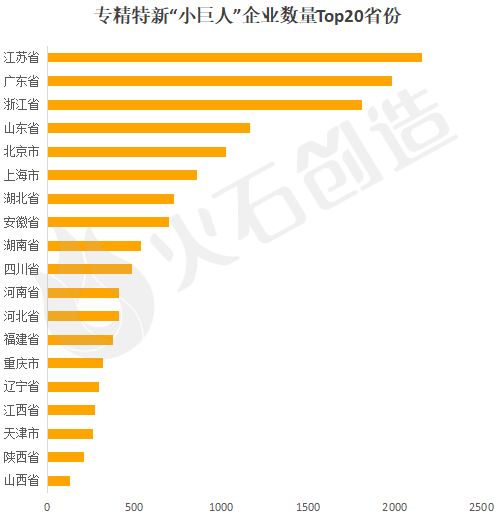
Source: Flare Intelligence Industry Data Center
Cities are the engines of regional development. This article delves into the urban landscape, selecting the top 30 cities based on the number of "Specialized, New, High-tech, and Unique" "Little Giant" enterprises. By analyzing their urban distribution, we aim to provide insights into the urban innovation ecosystem.
01
Three Distinct Tiers with Notable Differentiation
Among the top 30 cities, Beijing, Shenzhen, and Shanghai firmly occupy the top tier, closely followed by Yangtze River Delta cities such as Suzhou, Hangzhou, and Ningbo. Central and western core cities like Wuhan, Chengdu, and Hefei also exhibit impressive performances.
Top 30 Cities in the Number of "Specialized, New, High-tech, and Unique" "Little Giant" Enterprises
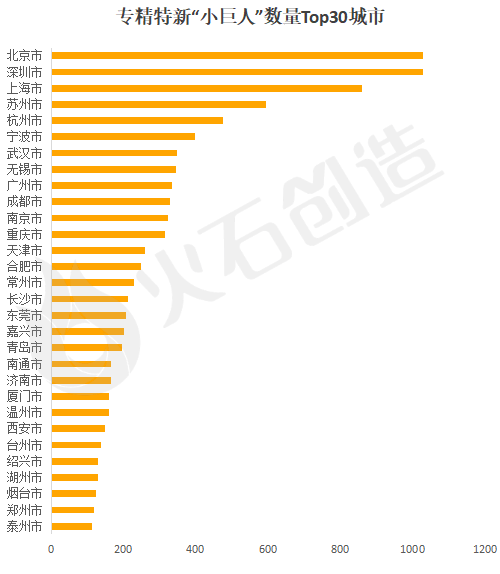
Source: Flare Intelligence Industry Data Center
First Tier: Beijing, Shenzhen, Shanghai
Beijing and Shenzhen lead the nation with 1,027 "Little Giant" enterprises each. Beijing boasts rich scientific research resources and significant advantages in fields like artificial intelligence and biomedicine. Shenzhen excels in electronic information and intelligent manufacturing, attracting numerous giant enterprises that drive innovation across the industrial chain. Shanghai, with 858 enterprises, ranks next, characterized by a dense cluster of integrated circuit and high-end equipment enterprises, and a seamless integration of foreign capital and local innovation. These three cities have become central hubs for "Little Giant" enterprises, leveraging their strengths in policy, capital, and talent.
Second Tier: Led by Suzhou, Hangzhou, and Ningbo, with the Rise of Central and Western China's Core Cities
Cities such as Suzhou (595 enterprises), Hangzhou (476 enterprises), Ningbo (397 enterprises), Wuhan (348 enterprises), Guangzhou (335 enterprises), Chengdu (328 enterprises), and Chongqing (315 enterprises) comprise the second tier. Each nurtures "Specialized, New, High-tech, and Unique" "Little Giant" enterprises based on its unique foundation. For instance, Suzhou, a robust industrial city, concentrates electronics, new materials, and biomedical enterprises, fostering synergy between foreign and local enterprises. Hangzhou integrates the digital economy with manufacturing to propel innovation in SMEs. Ningbo has a profound manufacturing base with outstanding enterprises in molds, optics, and automotive parts. Central and western cities have made significant strides in optoelectronics and new energy vehicles.
Third Tier: Strong Manufacturing Cities and Cities with Characteristic Industries
Cities like Tianjin (258 enterprises), Hefei (248 enterprises), Changzhou (230 enterprises), and Dongguan (207 enterprises) rely on breakthroughs in niche industries. Changzhou, for example, concentrates precision manufacturing and new energy enterprises, while coastal cities like Qingdao and Xiamen excel in electronics and marine industries, and Dongguan has developed electronic information manufacturing.
02
Yangtze River Delta Leads in Density, with Central and Western Cities on the Rise
From a regional perspective, the Yangtze River Delta is the densest region. Among the top 30 cities, 12 are from the Yangtze River Delta, including Suzhou, Hangzhou, Ningbo, Wuxi, Hefei, etc., reflecting the region's advantage in industrial chain collaboration. Zhejiang Province has the most cities on the list (Hangzhou, Ningbo, Wenzhou, Jiaxing, Taizhou, Huzhou, Shaoxing, totaling 7 cities), underscoring the vitality of its private economy.
In the Pearl River Delta, Shenzhen stands out, accounting for over half of Guangdong's "Little Giant" enterprises. Guangzhou and Dongguan still need to cultivate more innovative enterprises.
Central and western cities, with Wuhan, Chengdu, and Hefei as the core, are rapidly rising in fields such as lasers, chips, electronic information, aerospace, new energy, and display industries. Northern industrial cities, however, still need to enhance their overall innovation momentum.
03
Analysis of Influencing Factors
Overall, China's "Specialized, New, High-tech, and Unique" "Little Giant" enterprises exhibit notable regional differentiation, with the eastern coastal areas holding a significant advantage. While central and western regions are accelerating their cultivation efforts, a substantial gap remains. The following factors primarily influence this situation:
Economic and Industrial Foundations: Eastern coastal cities boast relatively developed economies, complete industrial chains, and vibrant SME innovation, making it easier to cultivate "Specialized, New, High-tech, and Unique" enterprises. Central and western cities have undertaken industrial transfers in recent years, forming local advantages in fields like automobiles, optoelectronics, and new energy, driving enterprise growth. In the Northeast, Northwest, and some southwestern regions, due to factors such as industrial foundations, talent, and capital, the cultivation of these enterprises is still in its nascent stages.
Policy Support Differences: Jiangsu, Guangdong, and other regions have introduced special support policies earlier, including financial subsidies, tax incentives, and financing support, to accelerate enterprise growth. Central and western provinces (like Sichuan and Hunan) have increased policy support in recent years but face financial constraints, resulting in weaker support compared to the east.
Uneven Distribution of Innovation Resources: Beijing, Shanghai, and other cities have dense universities and research institutions, strong technology transfer capabilities, and outstanding enterprise innovation. The Northeast and Northwest regions have fewer innovation resources and insufficient enterprise R&D investment, constraining the development of "Specialized, New, High-tech, and Unique" enterprises.
The urban competition among "Specialized, New, High-tech, and Unique" enterprises essentially reshapes China's manufacturing innovation landscape, warranting continuous attention. In the future, first-tier cities should propel the upgrading of "Specialized, New, High-tech, and Unique" "Little Giant" enterprises to global "hidden champions." Specialized prefecture-level cities should focus on niche areas, building characteristic industrial clusters that could become new cradles of "hidden champions." Central and western cities should strengthen industrial chain support, attract eastern technology enterprises to establish R&D centers, and accelerate the cultivation of innovative enterprises.
—END—
Author | Flare Intelligence | Weng Jianping, Wang Juan
Review | Flare Intelligence | Yin Li


